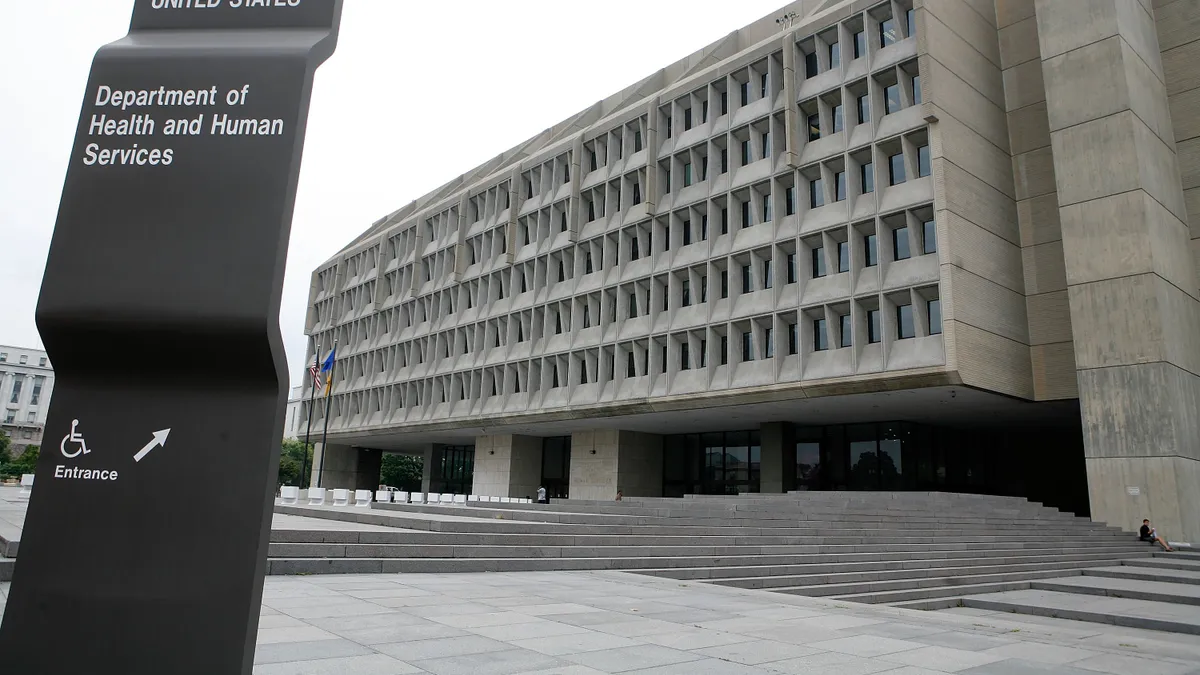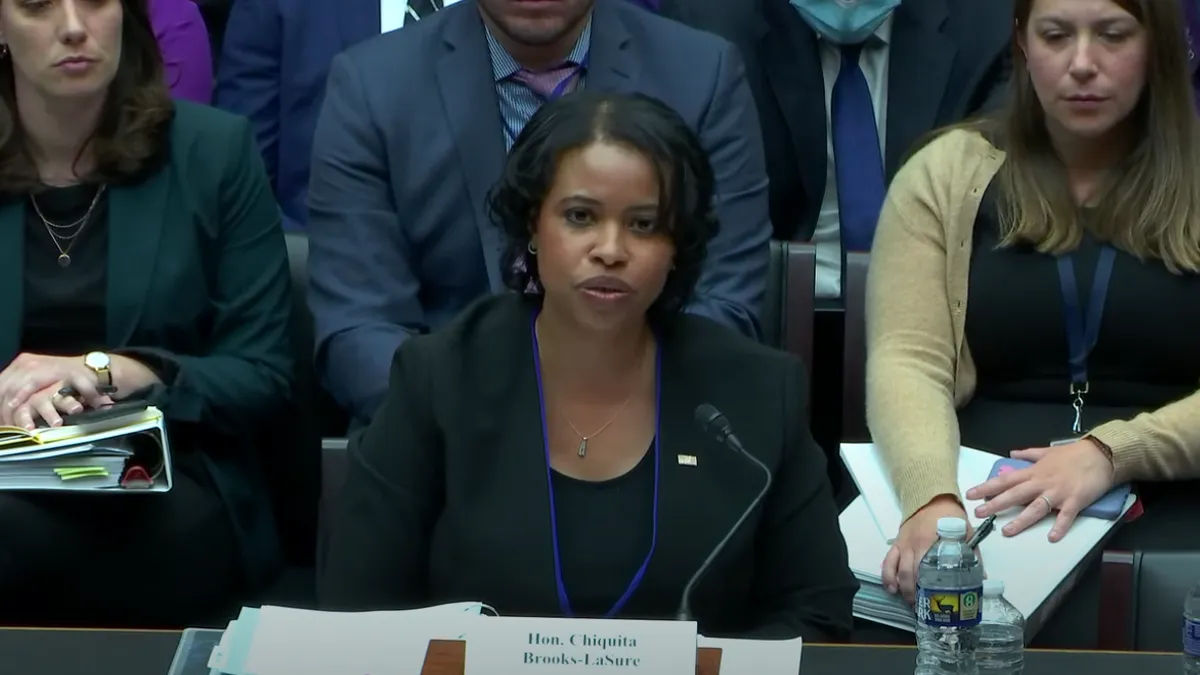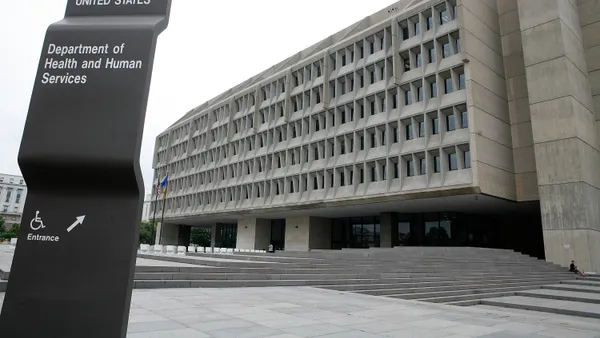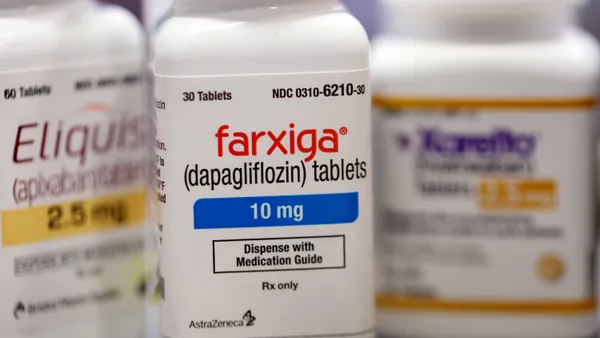Health insurers have invested heavily in building out their Medicare and Medicaid businesses in recent years, tempted by the prospect of healthy margins and growing membership in the government-run insurance programs.
But privately run Medicare Advantage and safety-net Medicaid plans are seeing their profitability shrink amid ongoing operational pressures, creating a sharp reversal in expected fortunes — much to health insurance executives’ chagrin.
For much of the past year, insurers bemoaned the headwinds in MA as seniors using more medical care caused spending to snowball. But in the second quarter, many payers suggested Medicaid has become a bigger problem, as states remove ineligible beneficiaries from the safety-net coverage, sickening insurers’ risk pools and saddling them with higher costs.
Income from insurers’ health benefits segments trended down in the quarter, leading some major national payers to cut their financial outlooks for 2024. CVS and Humana, which have struggled the most to contain the rising pressures in government plans, had particularly disappointing quarters, according to analysts.
Yet MA and Medicaid headwinds hammered medical loss ratios — metrics of spending on patient care — for all major U.S. insurers in the quarter. Generally, the higher the MLR, the less in profit a payer is able to retain from offering healthcare coverage.
All payers besides Elevance saw their medical loss ratios jump year over year
Even Elevance — the only major publicly traded insurer that avoided a year-over-year MLR increase — lowered its long-term revenue guidance for its health benefits segment following the quarter, citing significant member losses from Medicaid redeterminations and slowing growth in MA.
Meanwhile, CVS raised its MLR guidance for 2024, while UnitedHealth, Elevance and Centene said their MLRs will come in at the high end of existing guidance. Many executives said Medicaid was mostly to blame for the MLR bumps.
Cigna, an insurer whose focus on employer-sponsored coverage has sheltered it from the worst of MA pressures, also expects its MLR to increase in the second half of the year.
Yet headwinds in core insurance segments didn’t always translate to bottom lines. Payers have morphed into massive conglomerates with other sources of revenue that boosted financial performance.
That’s especially the case for CVS, Cigna and UnitedHealth, all of which operate major health services divisions that offset the worst losses in insurance arms. On calls with investors, executives said they’d go to the mat to defend those lucrative businesses amid rising public concerns over their market power and corporate practices.
Medicare Advantage woes continue
In MA, the government contracts with private insurers to manage the care of Medicare members. The plans can offer additional benefits like dental care and gym memberships along with more traditional Medicare coverage, making them increasingly popular with America’s seniors. The number of people in an MA plan has tripled since 2010, to 33.9 million individuals — more than half of the entire Medicare population, according to government data.
Medicare-eligible individuals aren’t the only group with soaring interest in MA. Payers have poured money into building out the plans, tempted by lucrative margins, which tend to be substantially higher than other types of insurance coverage.
However, insurers have been slammed with rising spending after MA members started using more medical services last year. Elevated utilization has proved sticky — especially in inpatient care, dental services and pharmacy — hammering insurers’ finances in the first half of 2024, according to executives.
The headwinds have hit some insurers harder than others. Elevance, for example, said it captured the worst of cost increases in its actuarial assumptions when submitting 2024 bids, so higher utilization was covered by higher premiums in the quarter.
Other payers have been caught more flat-footed by the dogged increase in spending — especially CVS and Humana.
The profitability of health benefits took a dive in the second quarter
Following its second quarter results, CVS cut its full-year earnings guidance for the third time this calendar year, rolled out a $2 billion cost-cutting plan and fired its top insurance executive.
Management has tried to rightsize its Medicare business through changes to 2025 bids filed in June, which CVS expects will cause it to lose up to 10% of its MA members.
The insurer said it exited a number of underperforming counties, and in some cases refiled less generous plans in those areas to sidestep federal limits on how much it’s allowed to cut benefits in a specific year.
Meanwhile, Humana expects to lose a few hundred thousand MA members next year after culling its benefits and markets for 2025.
CVS and Humana are telegraphing particularly steep cuts, but all MA payers said they had plotted out careful benefit reductions in 2025 bids to try and boost margins.
For example, Centene’s MA subsidiary WellCare is exiting six states entirely next year. The market exits will impact a little over 37,000 members, or about 3% of Centene’s current MA membership, according to a research note from investment bank Stephens.
Executives for UnitedHealth and Elevance told investors they’re cautiously balancing growth with profit preservation, yet want to avoid adding members in the short-term that saddle them with higher costs. Humana and CVS also expressed confidence in their 2025 bids, despite signs of higher trend continuing into the summer.
Meanwhile, Cigna is getting out of MA entirely, having agreed in January to sell its Medicare business to Chicago-based insurer Health Care Service Corporation.
That deal remains on track to close early next year, management said on their second-quarter call.
Medicaid’s reimbursement mismatch
Medicaid has faced notable turbulence over the past year as states resumed checking Medicaid members’ eligibility following a pause during the COVID-19 pandemic. To date, almost 25 million people have lost Medicaid coverage during the unwinding period, many of them for administrative errors like missing paperwork instead of actual ineligibility, according to a tracker maintained by health policy firm KFF.
People remaining on Medicaid are generally sicker. That spurred higher costs for insurers this year, which have scrambled to negotiate higher rates with states.
All Medicaid payers flagged a mismatch between rates and acuity in the second quarter. Some like Elevance added that they’re also seeing more Medicaid members utilizing healthcare, likely out of concern they could soon lose coverage.
Yet on earnings calls, payer executives reassured investors that states will continue raising their rates to remain actuarially sound. Centene CEO Sarah London called the disconnect “temporary and addressable,” while CVS CFO Tom Cowhey agreeing it should “self-correct over time.”
Analysts agree that the mismatch should wane over the next six to 12 months, ameliorating the financial strain on insurers.
Payers are also banking on high levels of reenrollments once redeterminations are complete, as people who were mistakenly removed from Medicaid rejoin the coverage. A flurry of recent contract wins and reprocurements is also aiding growth for large government insurers like Centene and Molina.
And, growth in the Affordable Care Act marketplaces should continue offsetting the worst Medicaid headwinds, executives said. Centene, for example, boosted its full-year revenue guidance following the second quarter because of ACA membership growth.
Elevance said it plans to expand its ACA plans in areas with high levels of Medicaid disenrollments, to capture more individuals looking for coverage, according to CEO Gail Boudreaux.
In addition to people losing Medicaid turning to ACA plans in droves for coverage, ACA payers have benefited from higher subsidies in the exchanges put in place during the COVID-19 pandemic. A record 21.4 million people signed up for ACA plans this year, swelling the rolls of insurers offering coverage in the exchanges.
Without congressional action, the subsidies will expire next year — an outcome payers with a presence in the exchanges are looking to avoid. On its second-quarter call with investors, Centene’s London argued that Washington should preserve the financial assistance, noting it’s an important driver of the payer’s near-term growth.
Health services becomes a vital earnings backstop
Even as health benefits divisions struggled, most major insurers posted healthy profits in the second quarter — many boosted by the strength of business that provide services to other healthcare companies, including pharmacy benefit managers, controversial middlemen in the drug supply chain.
Health services divisions accounted for 49%, 58% and 68% of UnitedHealth’s, CVS’ and Cigna’s total operating incomes, respectively, according to a Healthcare Dive analysis of their financial statements. The three insurers own the three largest PBMs in the nation, and have found those businesses under fire from Congress, antitrust regulators, independent pharmacies, patient advocates and more for their alleged role in rising drug prices and reducing consumer choice.
Executives on earnings calls pledged to aggressively defend the businesses, holding them up as the sole check on drugmakers’ ability to set prices. CVS, UnitedHealth and Cigna touted new pricing models as proof of the value of PBMs.
Meanwhile, Cigna CEO David Cordani said the company plans to increase outreach to Congress, sponsor more research into the value of PBMs and work more with independent pharmacists in a bid to turn around PBM’s shoddy public image.
CVS CEO Karen Lynch similarly promised to take a “very aggressive approach” in changing public dialogue around the businesses.






















